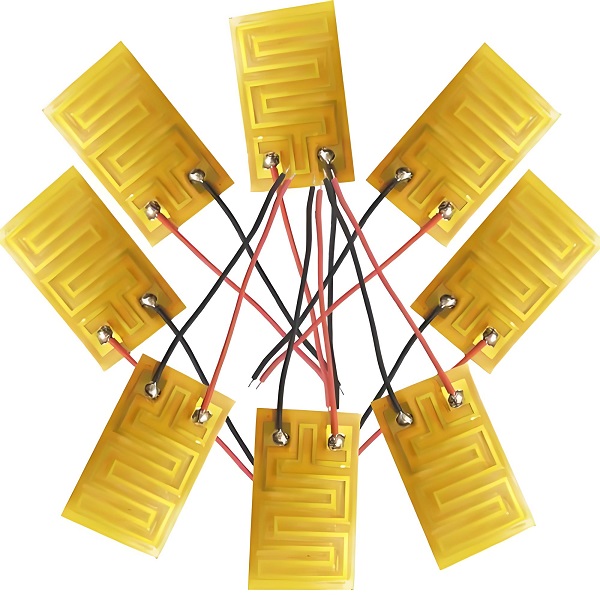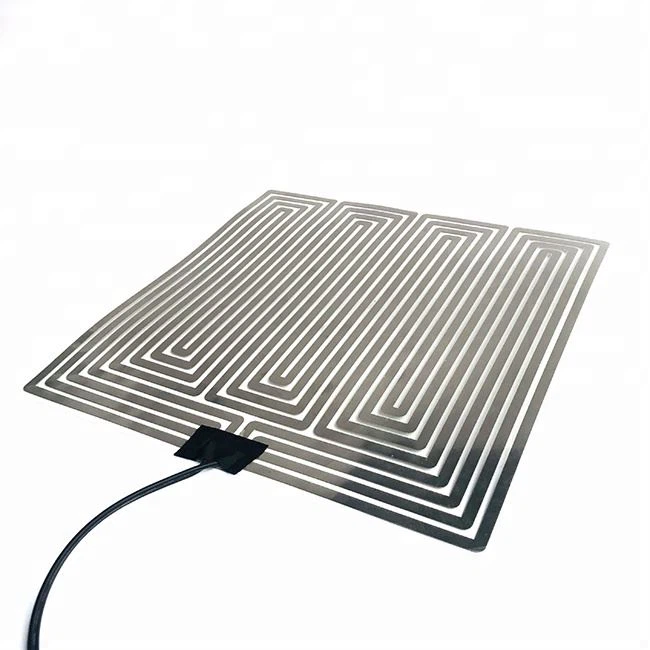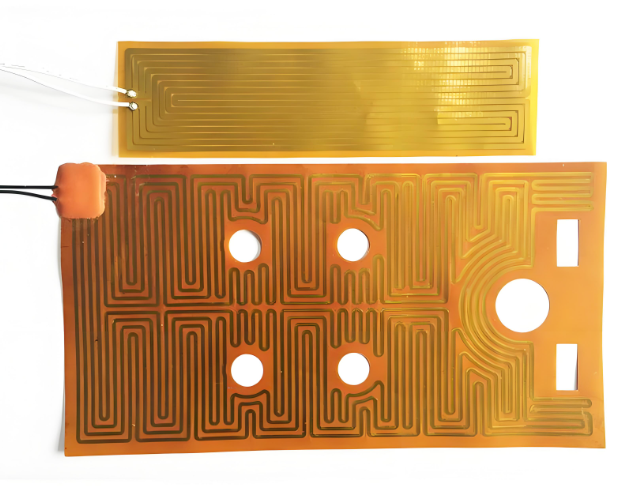Flexible heaters are widely used in industries ranging from medical devices and aerospace to consumer electronics and battery systems. The two most common types are PI (Polyimide) heaters and PET (Polyester) heaters.
Though visually similar, their material properties, temperature tolerance, and mechanical performance differ significantly. Choosing the wrong heater material can lead to premature failure, deformation, or insufficient heating, which is critical in high-precision applications.
This blog provides a detailed comparison of PI and PET heaters, explaining how they work, their advantages, and practical guidance for choosing the right material.
A PI flexible heater, also known as a Polyimide or Kapton heater, is made using a high-performance polyimide film as the insulation layer. Polyimide is famous for its excellent electrical insulation, thermal stability, and chemical resistance.
These heaters are designed for continuous use at temperatures up to 150°C, and they can handle short-term peaks even higher. Because of their thinness (as low as 25μm) and stability, they’re often used in aerospace instruments, medical devices, laboratory sensors, and lithium battery heating systems.

PET flexible heaters are built with polyester (Mylar) film as the insulating layer. This type of heater offers good flexibility and insulation but is limited in temperature resistance.
PET heaters are generally used in low-temperature applications where the working environment stays below 100°C. The minimum film thickness is about 75μm, and the complete heater thickness typically exceeds 0.2mm.
They are widely used in anti-fog mirrors, label printers, cosmetic tools, and other consumer electronics where gentle and stable heating is enough.

| Property | PI Flexible Heater | PET Flexible Heater |
| Material Type | Polyimide (Kapton) | Polyester (Mylar) |
| Operating Temperature (Continuous) | ≤150°C | ≤100°C |
| Film Thickness | 25–50μm | ≥75μm |
| Heater Thickness | Around 0.1mm | Around 0.2mm or more |
| Thermal Endurance | Excellent | Limited |
| Moisture Resistance | Strong | Moderate |
| Durability | High | Medium |
| Cost | Higher | Lower |
| Application Type | Industrial & precision devices | Consumer electronics & low-temp systems |
Yes. Both PI and PET heaters can be customized to meet specific design requirements, but there are important differences:
The polyimide substrate allows fine-line circuit etching, enabling complex serpentine or grid patterns for uniform heat distribution. This is ideal for applications requiring precise temperature zones or compact layouts, such as medical analyzers, battery packs, or aerospace instruments. The high heat tolerance ensures that even very thin traces do not degrade during use.
PET film is more limited in flexibility and cannot handle ultra-thin traces at high temperatures. Custom shapes are feasible, but very fine or high-density patterns may be challenging. PET heaters are better suited for simple or larger heating areas, such as anti-fog mirrors, printer heads, or cosmetic heating pads.
As we know, for all the heating devices, lifespan is a key factor in selecting a flexible heater.
Polyimide is highly stable under thermal stress, moisture, and mechanical flexing. It can withstand continuous operation at 150°C without insulation breakdown or dimensional deformation. PI heaters also resist oxidation and chemical exposure, making them ideal for applications requiring long-term reliability. Many industrial and aerospace heaters are designed to last over 10,000 operating hours.
However, PET heater is more sensitive to heat and moisture. Long-term operation near or above 100°C can cause film softening, delamination, or conductor oxidation. Consequently, PET heaters are often used in short-term or moderate-duty applications where replacement or maintenance is acceptable.
In summary, PI heaters generally have a longer and more reliable service life, while PET heaters are better for temporary or budget-conscious designs.

No, PET heaters are best suited for controlled, indoor environments.
PI heaters, on the other hand, are suitable for harsh and outdoor environments, including:
If your application involves moisture, high temperatures, or environmental stress, PI heaters provide superior safety and reliability.
Yes, both PI and PET heaters can operate with AC or DC voltage, but the design considerations differ:
Power design should consider heater size, material, line width, and target temperature to ensure safe and efficient operation.
Not recommended. Each material has specific advantages and limitations:
Using the wrong material can compromise safety, durability, and thermal performance, especially in applications requiring continuous heating or precise temperature control.
1. How thin can PI and PET heaters be?
PI heaters can be as thin as 0.13mm in total, including insulation and conductor layers. PET heaters typically start at 0.2mm due to material and structural limitations.
2. Can both heater types withstand repeated bending or flexing?
PI heaters are more flexible and can tolerate repeated bending cycles without cracking or delaminating. PET heaters are less flexible and more prone to mechanical fatigue under frequent bending.
3. How does each heater handle dry-run conditions?
PI heaters can handle higher dry-run conditions due to better thermal endurance. PET heaters should not be exposed to dry-run operation above 100°C to avoid deformation or failure.
4. What industries typically use PI vs PET heaters?
5. Can both heater types be laminated with silicone or epoxy?
Yes. Lamination improves durability, moisture resistance, and electrical insulation. PI laminated heaters handle higher temperatures than PET laminated heaters.
6. How do I choose between PI and PET heaters for my project?
Consider temperature range, mechanical stress, environmental exposure, budget, and lifetime requirements. PI is preferred for high-performance or industrial applications; PET is suitable for cost-sensitive, low-temperature applications.
Simply drop your email or phone number in the contact form, and we'll promptly reply you shortly.